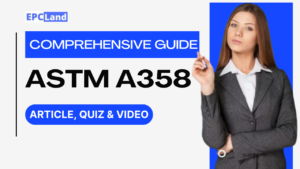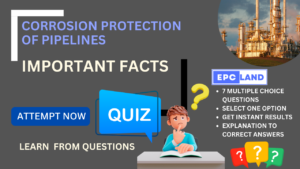Understanding Butterfly Valve Seats and Designs: Types, Applications, and Performance
Butterfly valve seats and designs play a critical role in their performance, sealing capability, and suitability for various applications. This guide explores the different types of seats and disc arrangements used in butterfly valves, detailing how each design impacts functionality, durability, and the environments they can operate in. Understanding these variations is essential for selecting the most appropriate valve for specific industrial needs, ensuring efficiency and reliability in fluid control systems.
Check the complete course on Piping Engineering
Multiple Choice Questions about Butterfly Valve Seats and Designs
Here are 10 multiple choice questions to test your understanding of butterfly valve seats and designs, based on the information presented.
Question 1: What is the primary function of the seat in a butterfly valve?
Question 2: Which type of butterfly valve seat is typically used for high temperature and high pressure services?
Question 3: In a soft-seated butterfly valve with a fully lined body and disc, what materials are commonly used for the soft seat?
Question 4: Which soft-seated butterfly valve design provides a balance between durability and sealing performance by using a metal disc?
Question 5: Where are soft-seated, fully lined butterfly valves commonly used due to their excellent corrosion resistance and chemical compatibility?
Question 6: In which butterfly valve disc arrangement is the disc centered in the valve body and rotates on a central axis?
Question 7: Which disc arrangement helps reduce wear and friction between the disc and seat during valve operation compared to the concentric design?
Question 8: Which disc arrangements are more advanced designs typically used with metal-to-metal seated valves for severe conditions?
Question 9: What is a key benefit of double or triple offset butterfly valve designs?
Question 10: Which butterfly valve design is often used when tight shutoff and durability under high pressure and temperature are required?
5 Major Takeaways about Butterfly Valve Seats and Designs
- Seat Material Impacts Application: The choice between soft and metal seat materials dictates the valve’s suitability for different temperatures,pressures, and fluid types, with soft seats offering tight sealing for less severe conditions and metal seats handling high pressures and temperatures.
- Lining Enhances Corrosion Resistance: Soft-seated valves with fully lined bodies and discs provide excellent chemical compatibility and are ideal for corrosive environments like chemical processing and water treatment.
- Disc Arrangement Affects Performance: The way the disc is positioned (concentric, single, double, or triple offset) influences valve operation, the amount of sealing pressure, service life, and torque requirements.
- Offsets Reduce Wear: Single, double, and triple offset designs minimize friction and contact between the disc and seat during valve operation, leading to reduced wear, easier operation, and longer valve life compared to concentric designs.
- Advanced Designs for Severe Service: Double and triple offset butterfly valve designs, particularly the triple offset, are engineered for demanding applications requiring tight shutoff and durability under high pressure and temperature conditions, often using metal-to-metal seats.
Conclusion
Explore all available courses on EPCLAND
Selecting the right butterfly valve seats and designs is paramount for effective fluid control. Soft-seated options excel in achieving tight seals and handling corrosive substances in moderate conditions, while metal seats and advanced offset designs are engineered for the rigors of high temperature, high pressure, and abrasive services. Understanding the interplay between seat material and disc arrangement ensures optimal valve performance, durability, and safety for specific industrial processes.
Check all the Free Courses by EPCLAND EPCLAND
Check all Quiz Based Blogs with Video Explanations: https://blog.epcland.com/category/piping-quiz/
Please select an answer before showing the explanation.



